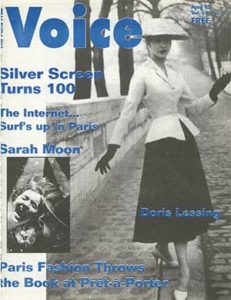Long days, mild weather and an army of jours fériés make May ideal for weekend trips into France’s far-flung corners. Between May Day, Ascension, V-E Day and associated “ponts,” this month was made for weekend forays. May is also a spectacular month to see France in bloom – fields of brilliant yellow rapeseed plants grace the countryside from Calais to Lyon.
Sugar Blue’s Paris Blues
I know it’s dumb but I can’t help asking: is it true that Mick Jagger first spotted Sugar Blue playing harmonica on the Métro? Sugar Blue looks at me like it’s the sorriest question he’s ever heard. “Oh man,” he says, “can you really imagine Mick Jagger on the Métro…? I mean, they’d never let him out!” Okay, so how did he wind up playing fierce harp solos on tracks like “Miss You” for three of the Stones’ best albums? “I was jamming at a party in Paris when this guy gives me a number to ring about some session work. This English voice answered and said it was Mick, and told me to come on over to the studio, only it was like midnight or something, but I went. The taxi put me out at this deserted place near the Bois and just when I was thinking I was out of my mind for believing this stuff, someone opens a door and the next thing you know I’m recording with the Stones!”
Paris, a Day at the Races
Although no “Hemingway sat here” plaques adorn the grand-stands of the eight Paris racetracks, the American writer was a regular horseplayer when he lived here from 1921 to 1926. Since the French racing establishment has done little or nothing to attract tourism – not even one brochure at tourist information centers – racing is one of Paris’ best kept entertainment secrets.
Web Future Gazing in 1995
In 1969, when many of us were watching the flag-waving Archie Bunker chew out the Meathead, his lazy, pinko, long-haired son-in-law, the United States government was secretly putting in place a small but innovative network of four computers that would share information and be impermeable to Soviet attack.
Fashion Photographer Sarah Moon
Paris Fashion in an Uproar
Robert Altman has Paris fashion in an uproar. Feeling used, abused and terribly misrepresented, industry professionals are screaming “foul play” over the film “Prêt-à-Porter.” “We are portrayed as a class of sex-crazed, dishonest, bubble brained idiots,” designer Jean-Charles de Castelbajac told Paris Match.
Doris Lessing “Under My Skin”
Doris Lessing likens memory to a shut door – the one that Alice desperately seeks to open though she is too small reach the doorknob. The access she has to her own past is unsure, arbitrary, selective. She describes as “creepy” the phenomenon that, “what I was told and what I remember were not the same.” She seemed to debate with herself, in the presence of a rapt audience at the British Council, the very nature of autobiography.
Trailing Spouses… and Careers
Spouse trailing is the curse of the expatriate wife, but Catherine Gilson turned it into a blessing by transforming her volunteer experience in Paris into The Culture Club, her own tour group. She is a textbook example of how women square the sometimes vicious circle of moving, setting up a household and trying to establish themselves before moving on again – the subject of a career-development seminar last month organized by WICE and the American University of Paris.
Conversation with Publisher John Calder
John Calder and Paris mix like Scottish malt whiskey and mountain spring water. Since the 1950s Calder, a veritable landmark to literary publishing, has focused on Paris as his literary plaque tournante. In fact, there is probably no single literary bookman still in the business that has done more to bring French authors into the English language. If it hadn’t been for Calder few anglophones in Europe would have been able to read the ground-breaking writers of the French nouveau roman. And his stable of writers is wildly impressive; he’s published over 4000 titles in forty years including the works of some 20 Nobel Prize winners, a fact he cringes at from modesty when it’s repeated in public. Artaud, Ionescu, Marguerite Duras, Alain Robbe-Grille, Nathalie Saurraute, Claude Simon, Robert Pinget, many of the Surrealists…the list goes on. Continue reading “Conversation with Publisher John Calder”
Delacroix’s Moroccan Painted Memories
“If someday you have a few months to spare, come to Barbary…you will feel the precious and exceptional influence of the sun, which gives everything a piercing life.” Just over 160 years ago, Eugène Delacroix left a wan Paris winter for a six-month adventure in North Africa. While few of us can jump up and follow his footsteps, following his brush strokes is an excellent alternative. Delacroix in Morocco – a gathering of his painted mementos – is on exhibit until January 15 at the Institut du Monde Arabe.
The Liberation of Paris Revisited
“Turn Paris into a pile of ruins. Defend it to the last man,” were Hilter’s orders to the German Commander of Greater Paris in mid-August 1944. Adolf Hitler was smelling imminent defeat, and he intended taking the city of Paris and its people down with him. Continue reading “The Liberation of Paris Revisited”


